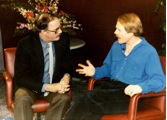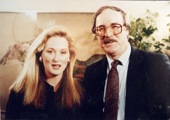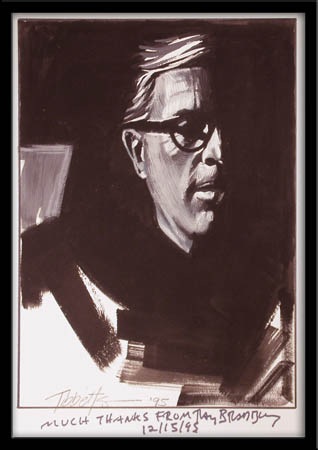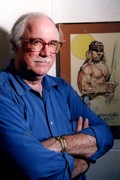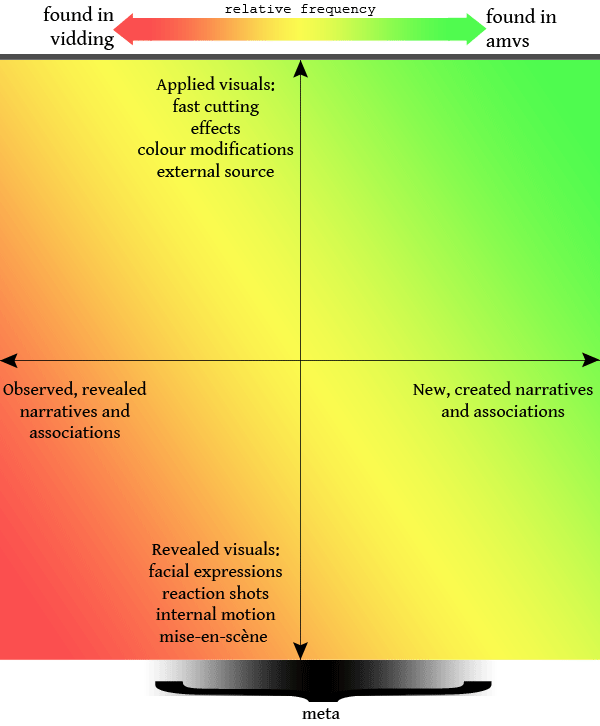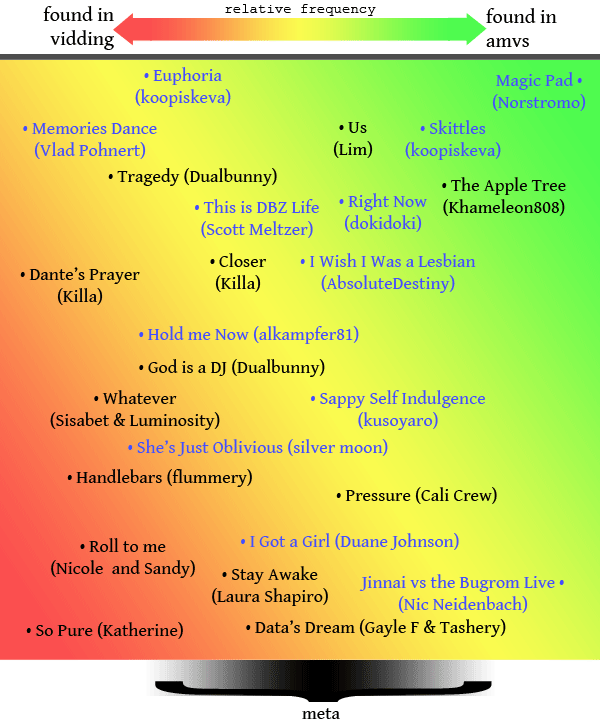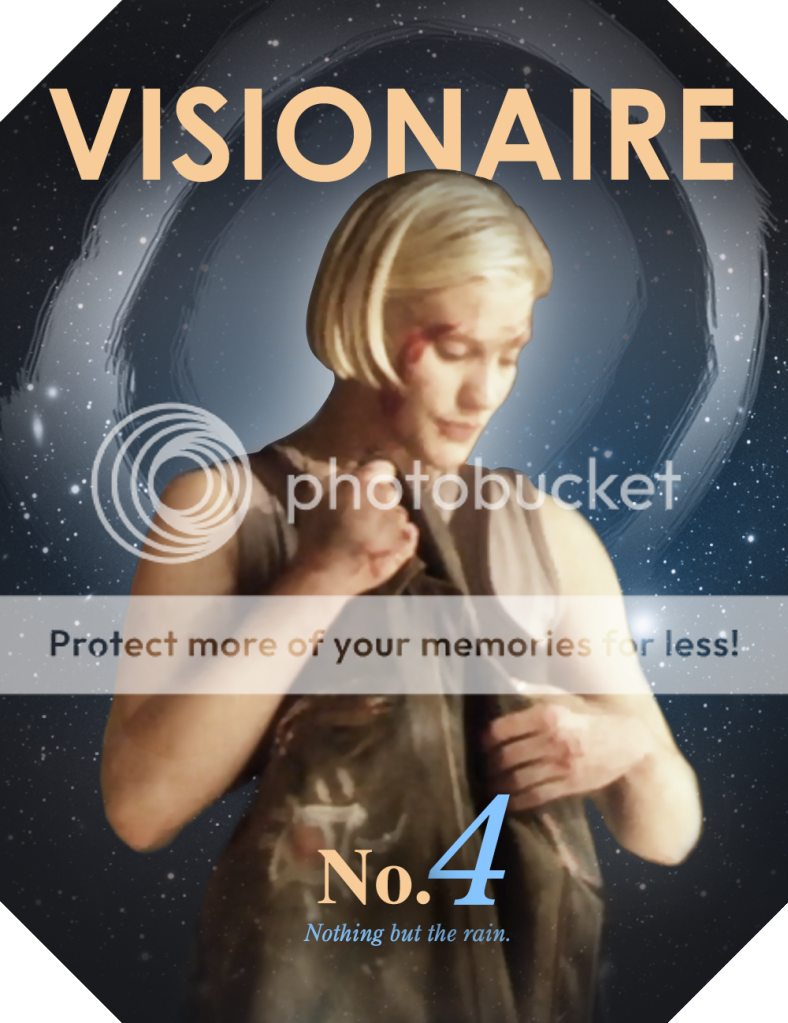Responses to My Rant about House, Castle, and White Collar
/My blog post last week ranting about how television deals with committed relationship clearly hit a responsive chord with lots of readers and has generated more response than anything I've posted here in a long, long time. Not only have we had active comments posted on the blog, I've also been receiving messages via e-mail, Tweets, Facebook updates, and in person comments. Today, I wanted to share some of the e-mail responses I've received so far, hoping to generate even more reflection out there on these issues. Please, if you want to add anything and have trouble with the Spam Filter on the blog proper, send me e-mails at hjenkins@usc.edu, and do signal that you intend the comments for publication here. So far, the series most often cited as having a great husband-wife relationship is Friday Night Lights, which I have not seen, but may give a chance based on this level of intense fan excitement.
Mr, Jenkins,
Hello! My name is Nicole Bessette, and I will be attending USC's School of Cinematic Arts as a Critical Studies major in the Fall. While on Twitter today, a friend sent me the link to your most recent article regarding the difficulty television has in representing committed relationships, and much as you confessed to inhaling Castle recently, I seemed to have done the same with your article. Your point of view and the way you so eloquently expressed it really struck a chord in me, so I wanted to take this time to wholeheartedly thank you for sharing it with me and so many others.
I, myself, have been a Castle enthusiast since the show first premiered two years ago, and I always tell people that the best thing about it and the reason why I personally believe it to be the best show on television is because of the writing. Mr. Andrew Marlowe, also a USC alumnus, has truly mastered every ounce of the show--from its characters to its relationships--and what I admire about him most is that he has given us a show that actually feels real. Unlike House, you can fully invest in these characters and the relationships that they have with each other, and at the end of each new episode, you turn off your television feeling as though you're a part of something bigger. For this and many other reasons, I could not agree with you more in believing that Castle is just the show to break the mold of the "unrealistic" TV relationships.
In fact, I have become so taken with Castle that I have begun writing about it for a website called BuddyTV.com. As their exclusive Castle Fan Columnist, I volunteer my time every Monday to write recaps of the latest episodes, and although it is often a very time-consuming process, I couldn't enjoy it more because I am being given such a great opportunity to promote a show that I love. In fact, through the power of the social media phenomenon that is Twitter, I was even fortunate enough to have three of the stars of the show (Molly Quinn, Tamala Jones, and Jon Huertas) read one of my articles. I guess all in all, however, what I am really trying to say, Mr. Jenkins, is that I am so very grateful to you for taking the time to highlight some of Castle's best features and in turn support what I believe to be the best show ever on television. What's more, I very much look forward to meeting you on campus sometime in the near future. Again, my sincerest thanks for taking the time to read this, and I wish you all the best!
--
Nicole Bessette
Hi
The whole conversation about what constitutes a good relationship or a bad one and how some show runners are awesome at portraying every kind of relationship, while others are only good at some, is something I love discussing, so here goes:-
For me a show that always did well with relationships was Friday Night Lights. The central couple of Tami and Eric Taylor were possibly the most realistic portrayal of a married couple I've seen on tv. They had been married for years and knew each other inside out. They did that silent communication thing (FNL were actually really good at letting silences work for them in general), they supported each other when their daughter, Julie, tired to play one against the other. They had silly arguments, they had more serious arguments but never was their love for each other in questions.
The writers didn't feel the need to have anything sensational happen within their marriage - no OMG secrets, no affairs, nothing like that. And they were one of the most compelling couples on TV because they were written WELL. Kind of like all the reasons you cited for liking Elizabeth and Peter on White Collar, who I also love.
I think that's the thing the writers and Nathan Fillion need to remember - if it's well written it will engage the viewer and they'll still want to see what happens next. The problem is it's the badly written relationships that stick in people's minds, creating the idea that as soon as two people finally get it together they become boring. It's the writing and the fact that writers don't necessarily know what they are going to do after the initial get together that creates a problem. For example: Sarah and Chuck's relationship evolved and moved on once they got together, but it's never been boring.
In fact, talking about Chuck, it reminds me of something that really annoys me - when shows will do anything ANYTHING to keep their main couple apart - to the point where it becomes a joke, it no longer comes about organically from the story, but it's just the writers wondering what they can do now to keep them apart and it becomes boring and annoying.
A show that did really badly with relationships was Stargate Altantis. The one that really sticks in my head is the Rodney McKay/Katie Brown fiasco. The two characters went from awkwardly liking each other to McKay proposing. It was ridiculous. McKay never spent any time with Katie and they seemed to find looking at each other, casually touching each other or giving each other chaste kisses really embarrassing. It was baffling that the writers thought that the viewers would buy into the idea that Katie and Rodney were in an actual, grown-up relationship. Then there was McKay's relationship with Keller that seemed to come out of nowhere - at least on McKay's part, and again had him spending little to no time (that the viewer saw or heard about) with the woman he professed to love. Those are not writers who should ever try to depict honest to god grown-up relationships.
I would love to tell certain show runners that you can't just throw a relationship at the viewers and expect them to like it. It needs lead-up, we need to see it happening (or at least be able to look back and see it happening). Also, make sure you don't take time away from the aspects of the show that viewers like, just to be able to include the romance, we kind of hate that. Along the same vain, don't forsake friendships and other relationships that have been portrayed for seasons for a romance that the viewers are going to be less invested in. If you bring in a new character, we resent them, if it's a regular character we resent that the others are being screwed. And if you bring two regular characters together - and it wasn't signposted from the beginning - you are going to have to put up with the fans who hate character A and character B being together.
I'd also like to tell show runners of certain kinds of shows that, really, romance isn't for them. Something like NCIS, for example. I watch that for the team interactions. I don't care about their romantic entanglements. The only one I'm okay with is Abby/McGee because that was something that existed from the moment McGee appeared and somehow the writers have managed to make sure that it doesn't take over the show and it's always done subtly and rather cutely. Compare that to Ziva and Tony, where you often feel like you're being hit over the head with a sledgehammer - also, thinking about Ziva and Tony, if you're actors don't have chemistry when possibly moving towards a romantic relationship, drop it. It's painful to watch.
When romance comes into shows that I don't equate with romance, I tend to stop watching them. I stopped watching CS:NY after the 3rd season because the writers focused WAY too much on Danny and Lyndsay and I found it boring.
And one final thing: show runners, you don't need romantic relationships in shows just to attract women. We like shows with little to no romance just fine and you tend to piss us off if you suggest that a show suddenly has romance in it to 'appeal to women'. Stop. Just, stop it. One of the reasons I like Nikita: the women don't spend their time angsting over guys or talking about them all the time.
I hadn't realised that this had got so long, so I think I'm going to stop now *g*
Iona Liddell
Hi Henry-
I recently rewatched My So-Called Life (thx netflix) and was surprised at how Angela Chase's parents were represented strongly as individuals also trying to navigate their own so-called lives. They were thoughtfully represented as individuals committed to each other while also trying to maintain some sort of healthy and separate identity/autonomy within a marriage and family.
-- C Coy
I think my gold standard for how to show a relationship is always gonna be John Crichton and Aeryn Sun, because even if it didn't reach solidly committed stage until pretty late, somehow it felt like that was what it really was the whole time, in a way. And I never felt any sense that they were any less interesting when they were committed, instead they were more.
But yeah, I agree totally with what you said about White Collar, because I adore the relationships and maturity in that show. \o/
--Alyndra N
Hello Professor Jenkins!
Wannabe aca-fan, graduating student in Media Communication and administrator of Bones Italian fandom, here!
I have to say that I'm always very interested in what you write, both academically and personally, but with the article you wrote yesterday you really touched my inner shipper's heart.
Given my experience on the subject, I think I can add another point of view to the discussion.
I think you're absolutely right when you say that television authors usually don't know how to represent a good healthy committed relationship, but it's also true that -often- they don't even have to arrive to depict that "committed" part of the relationships.
If you ask me, the real problem is that the "will they/won't they" dynamic works too well! I speak from personal experience when I say that it's like an addiction! No matter how long the authors keep the pair a non-couple or how bad the story gets, people can't help but coming back for more, hoping every time that THAT is gonna be THE time...
Unfortunately, this postponing the unavoidable is a pull so strong for the public (especially the female one) that let the networks to collect very high ratings, thus to pose two possible scenarios:
1) the authors get scared, become "cowards" and, dreading the "Moonlighting curse", let the pair remain a non-couple;
2) the authors are ready for the big step, but the network make them wait. And wait. And wait. And the pair remains a non-couple.
In any case, the pair finally becomes a couple when it's usually too late and the story is already ruined.
My favorite series, Bones, for example, is now, in its sixth season, dangerously bordering this "deadline".
Bones is a declared character-driven drama disguised as a procedural, starring Emily Deschanel and dear old pal David Boreanaz from the Whedonverse. It's considered like Castle's big brother because it's the one from where Castle authors take their inspiration. If you are enjoying the characters' dynamics in Castle, you definitely can't miss Bones!
I am now able to appreciate Castle as well (I'm loving the 3rd season!) but I couldn't begin to truly appreciate it until I accepted the fact that it wasn't really a "bad copy" of Bones (here at BuddyTV you can find a very funny article on the subject), but a different show that tries to address most of Bones' main themes from a different perspective.
These two shows definitely have a different "touch", maybe Bones is a little bit more deeper and Castle a little bit more frivolous, but in the end they're very similar and if you like one, you can't help but ending up loving the other as well.
For 5 years in Bones everything was great: the scripts were funny and intense at the same time, the characters explored at 360° and the chemistry between the main (non)couple exceptional, but then the authors (and the network), fearing of ruining everything, didn't have the stomach to take them to the next level when the time was right and decided to drag the story keeping them apart for a little longer but in this way they completely damaged their chemistry, depriving the show from its main point of strength.
Now, Castle has one huge advantage on Bones: it's 3 years younger and can learn from its big brother what to do and what not. Will it have the courage to take the big step sooner than Bones? At the moment, nobody can tell.
I, in the meantime, will keep to watch them both because they are, without any shadow of doubt, the two shows that best narrate their characters and if the writers will be so good to mantain the chemistry between the main couples even when they'll officially become couples, the shows will become even better!
Glad to have read your rant and hoping to read another as soon as possible.
Best regards,
Beatrice Belli
PS: My friends say that Chuck is a tv show where the authors knew how to put together the couple without ruining the chemistry but I don't watch it so I can't confirm, sorry.
Just read your fantastic Castle post. You say it's less aca, more fan - but with fan writing that has insight like that, who even needs academics? :p
You end the post with " But, tell me, what would you most like to teach the show runner of your choice about the care and feeding of actual human characters involved in committed relationships?" But do you specifically mean romantic relationships specifically, or any bond between characters? Because as you rightly point out, while the elements of the plot, the contrivances of the genre, may hook us in and keep us curious, it is always the characters and their emotional attachments to each other that led the viewer forge a connection. Even with something Lost, one of the most successful recent shows to have people coming back for "OMG what's next!", it's eduring appeal, I'd argue, was based on character attachment. Conversely, did Heroes become dull because of contrived plots? Or because we know longer much cared for its characters. Of course, none of what I am writing is I think even remotely novel.
I'll echo everyone on Friday Night Lights. The relationship between First Lady and President was quite interesting on The West Wing. I don't think I've ever paused to reflect on The Good Wife, in part because though I enjoy the show immensely, it rarely bears close scrutiny.
And a really fantastic show in all ways, including a wickedly incisive on again off again romance, is the Canadian TV series Slings and Arrows. It's a metatextual dramedy about a Shakespeare Festival in small town Ontario, where the slightly mad artistic director is haunted by the ghost of the previous artistic director, as they direct Hamlet in the first season, MacBeth in the second, and King Lear in the third. After The Wire, almost certainly the best work of Television I've ever encountered.
Two surprisingly interesting relationship dynamics are in very male dominated show. The first is Californication. You'd think the premise of bad boy artist fuck-up who sleeps around would wear thing after four seasons, and yet amazing, it is still compelling. And his absolutely love for Karen is really something. The relationship is completely FUBAR, and yet it's amazing how much they care about each other, and how we care for them. It's as if Hank Moody exerts on us as viewers the same sort of charm he does on women - we know he's an asshole, part of us just wants to get inside him (metaphorically, in the viewers case).
Second, a surprisingly interesting relationship is Ari Gold and his wife on Entourage. Now, it's not particularly realistic - nothing on the show is - and maybe ways, it's less about them as a couple but how it shows a different perspective to Ari. Even so, it's evolved into something very different than much of the show (and indeed, Ari's marriage is a crucial issue at the end of the most recent season).
And in terms of Castle specifically - yes, I think we'll get there. As it's much more than romantic tension, there have been so many missed connections of confessions of love. I agree with the poster's analysis of bones, that they "will they/won't they" will tire eventually. I think they are playing it out nicely, though occasionally it's torture as a fan. Think of the scene where they finally kiss - and yet, "nothing" evolves from that. Of course, any romantic entanglement between the two will have its own comedic pitfalls. I find it highly unlikely they would stay together without breaking up at least once. But so far, much like Californication, they have managed to stretch a charming premise way past it's usual expiry date, so I give them faith. I think for it to be most engaging, the doctor boyfriend needs to be an actual on screen character as much as he is tallked about. Even with limited screen time, Castle's flames have left way more of a mark than Becket's long term boyfriend.
And as well edited as that "closure" video was....Blah! If I want some that sappy, I'll watch Fillion's old soaps.
Michael Carens-Nedelsky
Dear Henry,
Thank you so much for your thoughtful insights into the problem of TV writing today and the lack of committed relationships being depicted. I have to totally agree with you. I am a HUGE Castle fan and have been watching since the very first episode. I have watched the relationship grow over the past three seasons and it does worry me a bit that one of the actors (Nathan Fillion) is leery about the relationship moving forward and the thought that it will get dull or boring and lose fans by doing so. But, I believe it doesn't have to be that way.
Take, for example, the Thin Man movies you were talking about, and that makes me think of the TV show Hart to Hart. Was that show ever great or what? They were married, the show was interesting, their chemistry was remarkably charming, and I know I was never bored watching it. That was one sexy couple and they were in a committed relationship, imagine that? Also, White Collar also has a great married couple, but Elizabeth is a little bit under used in that series and so we don't see her a whole lot. But, again, it's a great example of what a great committed couple looks like.
As far as House goes, I believe that it all boils down to the characterization. I believe that as he is written, he is just a miserable person and doesn't believe he deserves happiness or even that he can truly be happy. So, I think he will always try to sabotage anything good that could possibly ever happen to him. I know he loves Cuddy and she loves him, but that is one relationship that I think may be better off as it is currently. Especially since he has proven that he can't be there for her when she really needs him (her recent cancer scare) and he's so afraid of his feelings that he turns to drugs again to drown them out. I don't think he will ever be emotionally mature to handle being with her (or anyone really.)
Which brings me back to Castle. I had heard that the creator Andrew Marlowe stated that when creating Castle he modeled part of it from old black and white movies. You can certainly see there are characteristics he used, like the great banter from the Tracy/Hepburn movies like Woman of the Year, or even Hepburn/Grant in Bringing Up Baby (not that he used those specifically I am just referencing movies I feel have that great back and forth between the characters). Castle and Beckett have had that great give and take right from the start. The issue I see is that from the very first episode as the show is written, there is that "attraction." Castle is pretty much hitting on Beckett from the start. I feel that Castle in the first season is depicted a bit as a womanizer. (that is just my opinion and how I saw him in Season One.) I think he has mellowed out as the seasons have gone on and has even shown a bit more maturity as the series progresses. I have sensed that Beckett's hesitation in allowing herself to admit to feelings for him may stem from her first impressions of him (if it was the same as mine. Again I am just speculating).
I feel that if a show starts out from the first episode, catering to this immense attraction, it's only inevitable that the fans start getting restless for the couple to become a romantic couple. Castle is now in Season 3 and we have had episodes like Knockdown where the characters kissed, even though it was supposedly as a "cover". And episodes like Countdown when the characters come very close to death and one character comes close to finally admitting that they love the other (at least it looks like what she was about to say.) Then we have the last few episodes where there is barely any interaction between Castle and Beckett of any kind of personal nature. It's very hard for fans who are rooting for this relationship to all of a sudden feel like the brakes are being slammed on just when that train just started to pick up some speed.
I believe for a show to survive the will they or won't they debate, they should take a clue from The XFiles. This was a show that did not introduce their two main characters right from the start as having this immense sexual tension between them. They developed a working relationship, a friendship and years down the road you get a hint of something deeper going on. I didn't even consider them a romantic couple until the first XFiles movie came out and they almost kissed. That was when it finally dawned on me that they could have the potential to be a great couple. I know a lot of XFiles fans would disagree, just like there are Castle fans out there who don't want to see them get together either. I believe that for Castle, it has to happen. They have to have these characters give a relationship a shot. The writing the whole time has been working towards that, I think it's very obvious. And I do believe they can make it work. Take Scarecrow and Mrs. King for example, they gave it a shot and even got married . Okay, so the marriage was a secret but I believe if Kate Jackson had not gotten sick and if the show hadn't ended due to her illness it would have lasted longer and it would have been exciting to see where it would have gone.
So, yes there is hope that a happy, committed relationship between Castle and Beckett is possible. And I hope the writers prove Nathan Fillion wrong and Stana Katic right. And make some of us die hard Castle fans who want to see them together very happy. And I can't believe I am about to say this but here goes... But, if they feel they do think a romantic relationship between Castle and Beckett will dive bomb like Moonlighting, then let the characters move on and form committed relationships with other people. It would break my Castle fan heart, but at the same time I would rather they just stop it now then hesitate for too long and miss the wonderful chance that could have been theirs.
Thanks so much for listening and so glad you love Castle as much as I do!
Sincerely,
Judy Peak
I, myself, have been a Castle enthusiast since the show first premiered two years ago, and I always tell people that the best thing about it and the reason why I personally believe it to be the best show on television is because of the writing. Mr. Andrew Marlowe, also a USC alumnus, has truly mastered every ounce of the show--from its characters to its relationships--and what I admire about him most is that he has given us a show that actually feels real. Unlike House, you can fully invest in these characters and the relationships that they have with each other, and at the end of each new episode, you turn off your television feeling as though you're a part of something bigger. For this and many other reasons, I could not agree with you more in believing that Castle is just the show to break the mold of the "unrealistic" TV relationships.
In fact, I have become so taken with Castle that I have begun writing about it for a website called BuddyTV.com. As their exclusive Castle Fan Columnist, I volunteer my time every Monday to write recaps of the latest episodes, and although it is often a very time-consuming process, I couldn't enjoy it more because I am being given such a great opportunity to promote a show that I love. In fact, through the power of the social media phenomenon that is Twitter, I was even fortunate enough to have three of the stars of the show (Molly Quinn, Tamala Jones, and Jon Huertas) read one of my articles. I guess all in all, however, what I am really trying to say, Mr. Jenkins, is that I am so very grateful to you for taking the time to highlight some of Castle's best features and in turn support what I believe to be the best show ever on television.
--Nicole Bessette
Hi Dr. Jenkins,
I just read your April 6 blog and wanted to share with you this recent post I made on another forum because it relates to your question of what would I ask of the showrunners of Castle (a family favorite in our home).
Interrupting our S/J ship to comment on confirmation. Or shipfirmation. Or...whatever we want to call it. Bear with me, I promise this is not off-topic
I am grading papers this morning while watching (loosely speaking) the last X-Files movie on tv. Now...I was a M/S (Mulder/Scully) diehard shipper. Wrote my fair share of fanfic, read some fabulous fanfic, etc... and like all shippers was clamoring for resolution.
Not that half-a$$ed stuff we got with maybe-babies that were given up, not halfway-hallway kisses (but sexy as all getout in the outtakes of movie 1), no. We wanted 100% "I fell in love with you" dialogue.
And we got it in movie #2.
Now...the next bit should be read with the understanding that not only was I a fan of the show, I worked on the show. My screen name used to be "setmedic," so that should tell you what I did.
I worked hard to work on the show, because I loved the show. I tell you this so you can understand my next statement. Movie #2 was total and utter rubbish. Start to finish.
Fragmented script, go-for-the-gore storyline with no real premise, no characters in which we could put our faith, or commit to, we certainly didn't care about M/S as characters, and they lost all cred (for God's sake, Scully **Googled** stem cell research in looking up treatment options (and seriously...a pathologist doing "cutting-edge" pediatric cancer treatment? Really?)). But, I digress.
But. Earlier in the movie we got a scene in which (strangely reminiscent of the Jack/OTHER scene) in which the camera lifts over Scully's sleeping body to reveal...Mulder. And, just five minutes ago, Scully looked deep into Mulder's eyes and said "This is why I fell in love with you."
Woo. Freaking. Who.
A small, throwaway line that meant...NOTHING.
NOTHING.
No feeling. No chemistry. By this point neither actor was invested in any way in doing the movie other than for financial reasons (yes, I do know this). It wasn't about futhering the story, or the mythology, or an homage to the fans. And it showed in the dry, passionless, "I love you," which may as well been, "That's why I bought cabbage with you."
I do not want our Sam/Jack confirmation to come in the form of a throwaway line in a crappy movie. I would much rather have fanfic and the end-of-the-series-as-we-knew-it Season 8 "Let's not dwell" pier fishing (and we all know it's not about the fishing) scene than a sarcastic, stick-it-to-the-fans tossed-off line.
I, and many of you, have brilliant imaginations and we know the actors love and respect the characters -- nearly as much as do we. I don't believe Brad would put us in the same position Chris Carter did with X-Files, but just in case, I'm laying it out there:
Dear Brad,
Please give us our unequivocal shipfirmation in a lovingly respectful way that enhances and celebrates our characters and does not make them caricatures of themselves or the genre. If that's not possible, please leave it as-is. I'm good with that.
With deepest respect,
Pol
So, Dr. Jenkins, my plea to Andrew Marlowe and Terri Edda would be to use their married relationship as a basis for the dynamic. Or the "couple-age" dynamic of the fabulous writers of the gay family in Modern Family, (and other families in the show) because they have completely nailed those relationships.
In short, Andrew and Terri, take a look around at the fantastic, successful, thriving relationships around you and mine them for the wealth of information they offer. What things do couples struggle over? Money? That's boring. For Castle and Beckett it would be about power. Castle is a typical white male who has money. Lots of money. Lots and lots of money.
What if the Nikki Heat series doesn't do as well as Derek Storm? Is Castle not writing the Beckett he sees? She should be a best-seller.
What if Castle wants to do some real police training? How would that change their dynamic? What if he decides to do the Academy?
Oh, how I'd love to write for them!
Thank you (as always) for the venue and for your fantastic insights.
Best,
Polly
Dear Prof. Jenkins:
Hello! I'm a longtime reader who loved your post on television's allergy to committed relationships, and wanted to add a few thoughts:
- Another shining example from a surprising source: The Vampire Diaries's Stefan and Elena, who have been together 32 episodes and counting. They're high schoolers, but by CW standards, staying together for more than a season = practically married. It's to the writers' credit that the obstacles they've faced as a couple have been much more compelling than the "we're so different and this can never be!!" hand-wringing they went through beforehand, and it highlights a common thread that I think runs throughout the shows that have pulled off successful relationships: respect for stability and loyalty. Elena and Stefan are largely portrayed as a sensible and well-adjusted people, which doesn't preclude disagreements, but eliminates the need to rely on interpersonal conflict to drive the plot. The town's machinations keep them busy enough. I get the sense the writers want them to stay together because there's such a rich story to be mined there, and thus have avoided the willful misunderstandings/distrust/stupidity that have been used to break up other pairings. Stefan and Elena - along with Friday Night Lights's Eric and Tami Taylor, which I'd agree with other posters is the gold standard - run contrary to the conventional wisdom that relationships that hook viewers aren't synonymous with what we want in real life. My corner of fandom would love to life-swap with the Taylors. Give me domesticity any day,
At the same time, I'll acknowledge Beatrice Belli's point that "will they/won't they" works really, really, ridiculously well - so well, in fact, that I'd guess it's one of the elements of a show that's most likely to turn casual viewers into spoiler-seeking, fic-reading, content-producing fans, and writers may be more confident in their abilities to maintain their audience's interest that way - and with good reason, since pulse-pounding depictions of domestic life are so rare and exert a different emotional pull. Not to justify writers' fears, but I think there is something uniquely engaging about UST that's hard to replicate; the tension doesn't go away once characters get together, but it comes packaged in a different form by nature, one where the attraction is no longer so hard-won. I'd be interested in hearing from people whose investment in a TV pairing grew after the protagonists got together after a looooong buildup. Then again, maybe the situation is so dire there wouldn't be any good examples, and that's the problem in the first place!
- I don't watch House, but through fandom osmosis I'd suspect that the writers have taken pains over the years to compound House and Cuddy's respective dysfunctions to keep them apart, which has now backfired in the form of reverting to tired patterns. Your point about showrunners resisting change is well-taken; however, I think what's turned me off of more shows is post-hookup characters becoming unrecognizable. The world's best chemistry can't make up for a lack of caring. I loved Jim and Pam up until season three of The Office, and my losing interest in the show had nothing to do with their getting together. I just didn't like them anymore, separately or together: the once-endearing appreciation society of whispers and pranks they had formed to make through the workday now just seemed petty and mean-spirited, and Pam got flattened into Jim's appendage. That and the plots were about 100x less funny. Same with Chuck and Sarah - I've read praise of how the writers have handled their evolving relationship, but by the time Sarah had been reduced to Chuck's damsel in distress to make it happen, I wanted out. More than anything I wish writers understood that viewers become invested not only in the idea of a relationship, but also in the separate identities two characters bring to the table, their friendships and partnerships with other characters....and the plots that frame all these interactions! I'd rather have writers focus on developing a stable male/female friendship dynamic grounded in respect before plying their audience with romantic tension. Honestly, I'm not sure whether half of the will they/won't they couples on my current shows even like each other. There's one: Leslie and Ben on Parks & Rec. Your description of Castle and Beckett also applies to them: "They clearly are two people who have fun together...and they are people who respect each other's intelligence and creativity." What I love to see in a committed relationship isn't all that different from a great friendship.
- I've never seen a full ep of Castle, but I have a few good friends who love it, and for their sake, television's, and yours, I hope Castle and Beckett achieve that elusive balance: happy but not complacent; steady but not predictable; and not too late in the show's run, when the cases remain fresh and interesting and a worthy canvas for the characters. If I could give the writers any advice, it would be to invest in some good plotting, because the intrigue of a tight mystery does wonders to supplant the tension that fades when the stakes are low. The characters are what keep me watching a show, but too often it seems like showrunners are only willing to take a big step late in the game, when the storylines and dialogue are no longer at their best. I think the long-range format is one of TV's greatest strengths, but I often wonder whether we'd be better off with short-run, UK-style series that allow for more thoughtful planning and a surer sense of direction. But your post makes me hopeful this show will use the format to its advantage, and if Castle manages to combine an ongoing committed relationship with smart cases, I will buy the DVDs so fast I'll leave skid marks.
Thanks for opening up the floor to such a great question! I loved reading the responses, and I hope it's all right mine rambled on for so long. Your work helped convince me to pursue graduate studies in media studies, so it means a lot that you took the time to read this. From one fan to another: thank you!
Best,
Jennifer Shen


